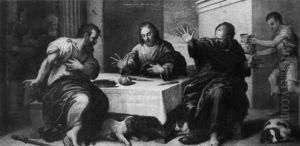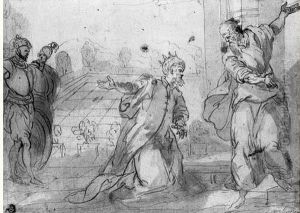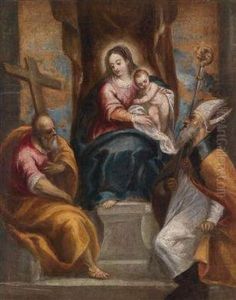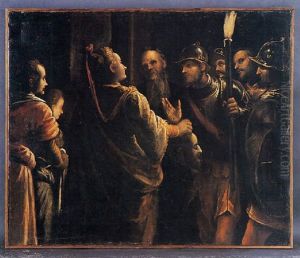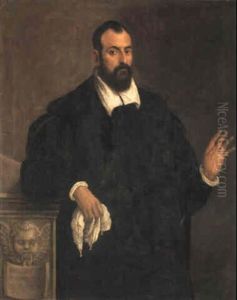Giovanni Battista I Maganza Paintings
Giovanni Battista Maganza, also known as Giovanni Battista I Maganza to distinguish him from his descendants who carried on his name and artistic legacy, was an Italian painter and poet born around 1540 in Vicenza, in the Veneto region of Italy. His work is often associated with the late Renaissance period, and he is known for his contributions to the Venetian school of painting. Maganza's artistic output includes religious subjects, portraits, and mythological scenes, characterized by their detailed narrative quality and his skillful use of color.
Maganza's education and early influences in art are not thoroughly documented, but it is believed that he was part of the intellectual and artistic circles in Vicenza, which were vibrant with discussions on literature, art, and philosophy. This environment may have nurtured his dual interests in poetry and painting. His style was influenced by the works of Paolo Veronese and Jacopo Tintoretto, two dominant figures in Venetian art, yet Maganza developed a distinct approach, particularly in his handling of light and composition.
Throughout his career, Giovanni Battista Maganza was commissioned to work on various projects for churches and noble families in Vicenza and its surroundings. His paintings often reflect a deep religious sentiment combined with a humanistic approach to subjects, a characteristic of Renaissance art. Maganza was also an accomplished poet, and his literary works were well-regarded among his contemporaries, further indicating the breadth of his talents.
Maganza's legacy continued through his family, most notably his son, Alessandro Maganza, who became a prominent painter in his own right. Giovanni Battista Maganza's contribution to the Italian Renaissance, though perhaps not as widely recognized as some of his contemporaries, remains significant for its blending of poetic narrative and visual artistry. He died in 1617 in Vicenza, leaving behind a body of work that continues to be studied for its insight into the cultural and artistic milieu of late Renaissance Italy.
